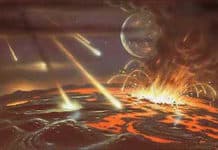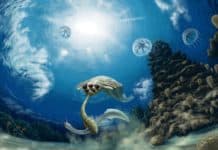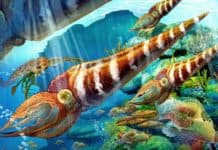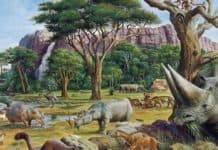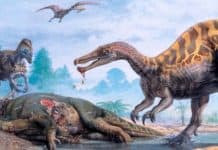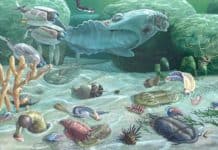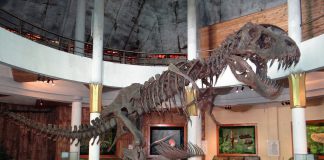The Silurian Period started approximately 443-440 million years ago and ended 419 million years ago. Technically, this period begins with the Ordovician-Silurian Extinction Event which wiped out over half of all marine species. This period can be subdivided into four epochs which include the Llandovery Epoch, the Wenlock Epoch, the Ludlow Epoch and the Přídolí Epoch.
The period is marked by some fairly impressive geological changes. The supercontinent Gondwana covered the equator and a large portion of the Southern Hemisphere and this created a large northern ocean that covered the upper half of the Earth. Since sea levels were so high at this time, with few mountain belts, this created quite a few island chains. As the period continued to progress, Gondwana would begin to slowly drift southward. Three continents began to drift together near the equator: the Avalonia, the Baltica, and the Laurentia. They would eventually form the groundwork of the second supercontinent Euramerica.
Temperatures during the Silurian Period remained warm and were pretty stable. This caused sea levels to rise until the mid-point of the period and then eventually fall through the rest of the period. The Glacial retreat was so severe, thanks to CO2 levels of 4500 parts per million, that the South Pole almost became nonexistent. Giant storms raged over the vast ocean, fed by the warm waters. Eventually, the climate would begin to cool near the end of this period and the weather would begin to stabilize a little more.
This period of time saw some extremely extraordinary organisms evolve. These include bony fish such as the Osteichthyes, as well as a diverse class of fish which include those with movable jaws and triple grill arches. Leeches also made their appearance during this time, as did Eurypterids – also known as sea scorpions. Other types of creatures which continued to evolve included trilobites, crinoids, mollusks, bryozoan, Brachiopods, and hederelloids. By the middle of the period, arachnoids, myriapods, millipedes and trigonortarbids also began to appear. And near the end of the period, vascular plants made their debut, growing along the banks of rivers and streams.
The vascular plants that appeared though did not resemble many of the plant species that exist today. Most of them belong to the genus Cooksonia – plants which produced sporangia at their multi-branched tips. They didn’t have leaves, roots or flowers. And they seemed to have occurred in a variety of different sizes – from .03 mm all the way to 3 mm. Originally, these plants were thought to have evolved during the Devonian Period but scientists now believe that they actually evolved during the time period instead.
